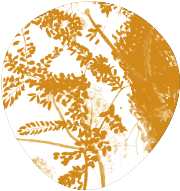

The Future as an Entire Ecosystem of Social and Spiritual Possibilities
“Every language is an old growth forest of the mind, a watershed of thought, an entire ecosystem of social and spiritual possibilities…” — Wade Davis
In the Paris Olympics 2024 opening ceremony, athletes from competing countries, boated down the Seine River which has been massively cleaned up from contamination for these global games.
In 2015 there was a less publicised but perhaps no less significant journey down the Seine. This time by the Kichwa People of Equador, travelling the Seine in a traditional canoe to COP 21, bringing the message of Wsak Sacha – The Living Forest: That the forest of the Kichwa is a conscious being, and it is the people’s responsibility to maintain the life and balance of it. The Kichwa joined with Indigenous peoples from around the world, pressing for their rights due to the impacts of global climate change. In 2015, Indigenous voices at COP 21 were mostly sidelined and yet because of their advocacy, the Paris Agreement came into effect, to keep emissions to well below 2 degrees, and limited to 1.5 degrees above pre-industrial levels.
This term, in our transdisciplinary theme Eco – Wisdom, we are exploring the wisdom of Indigenous Peoples and asking, What could futures look like if their worldviews and knowledges were guiding forces?
Anthropologist Wade Davis speaks of the 1968 Apollo mission into space, where the first images are seen of earth as a “blue marble”, a precious water planet. Accompanying these images, the Apollo astronauts brought into the zeitgeist a message of one planet and one humanity. Wade Davis believes the next thing to enter the zeitgeist or consciousness of humanity as a whole, is the scientific understanding from the Genome Project, that all humanity is “cut from the same cloth”, that race is a construct of the mind. Davis speaks of how the human spirit walked to every place on the earth, how we become human and alive in diverse places, and this is evident in the 5,000 Indigenous cultures and 7,000 languages presently in our world.
Indigenous cultures have over the long ages, developed and sustained ingenious ways of living in ecologically reciprocal and enriching relationships to place. In Australia, especially since the NSW fires of 2019-20, traditional knowledge of cultural burning is increasingly recognized and practised, to mitigate the impacts of climate change and more sustainably manage land. If, as Wade Davis says, “Every language is an old growth forest of the mind, a watershed of thought, an entire ecosystem of social and spiritual possibilities…” what possibilities can we collectively imagine with relationship to land, water and cosmos as guide?
Science fiction writer Ursula Le Guin said, “We live in capitalism. Its power seems inescapable. So did the divine right of kings. Any human power can be resisted and changed by human beings. Resistance and change often begin in art, and very often in our art, the art of words.”
According to Geographic Explorer Keolu Fox, water and wealth are constructed from the same word in Hawaiian. The natural beauty and life-giving resources of land and water in many Indigenous cultures are regarded as wealth. It is my understanding that these words, wealth and wellbeing, are connected, one has only to think of threats to health to make the link with what is of true value.
In Senior School, while exploring the wealth in the diversity of the world’s Indigenous people, we are also bringing into light, the wealth that is within these young people/students. Their resilience and their ingenuity as they figure out who they are in relation to where they live (place and people) is another kind of wealth/wellbeing for themselves but also for our collective lives.
In the wise words of Rose, “A future guided by Indigenous wisdom could be one of greater environmental harmony, of cultural richness, and global solidarity….we are only One, as we are many.”